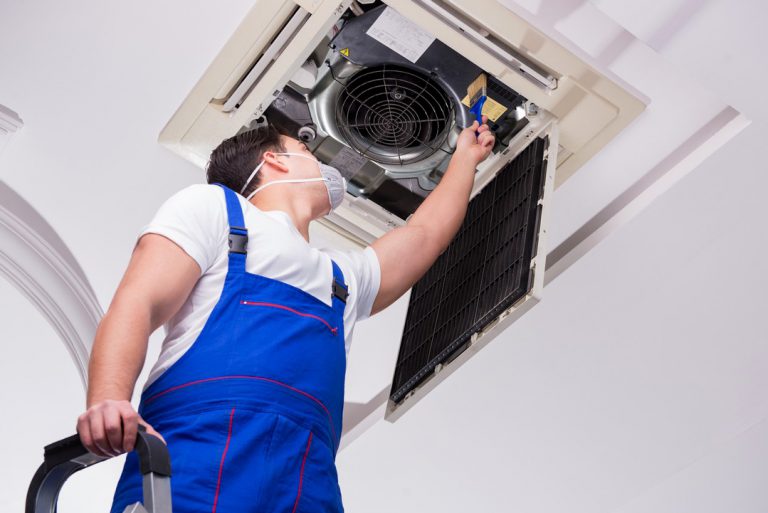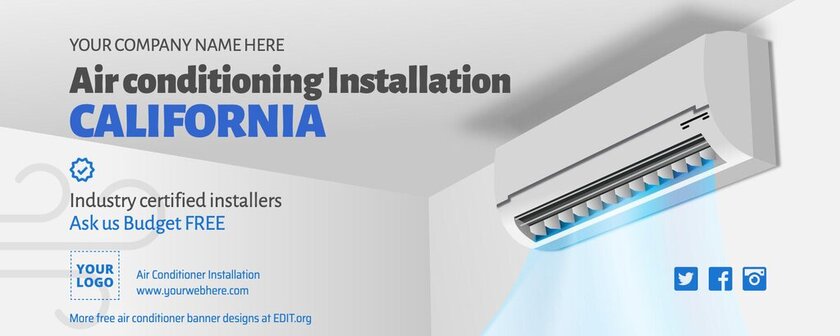Did you understand that 85% of all a/c problems can be dealt with without the need for professional aid? When your a/c starts breaking down, recognizing where to start troubleshooting is critical.
From odd sounds to cozy air burning out, these problems can be frustrating. However concern not, just like a few simple steps, you could be able to detect and fix the problem yourself.
So, prior to you think about calling a professional, let's explore some usual air conditioning issues and just how you can tackle them head-on.
Key Takeaways
- Address uncommon sounds without delay to stop additional damage.
- Ensure appropriate air flow by cleaning up filters and uncloging vents.
- Check cooling agent levels and clean parts for optimal cooling.
- Frequently preserve and clean the air conditioning to prevent leaks and breakdowns.
Unusual Noises
If your air conditioning unit is making unusual audios, do not ignore them as they can indicate a potential concern. One typical source of these noises might be compressor troubles. A loud banging or clanking sound might recommend that there are problems with the compressor, which is an essential part in charge of flowing refrigerant. Disregarding this could lead to additional damages and a prospective malfunction of the system.
Another possible reason for uncommon sounds might be follower issues. If you listen to screeching or squealing audios originating from your AC device, it could aim towards issues with the fan motor or blades. The fan plays a crucial function in ensuring appropriate air flow and air flow within the system, so resolving any kind of fan-related noises without delay is vital to stop any kind of disruptions in cooling down efficiency.
Weak Air movement
Experiencing weak air flow from your cooling unit can be an indication of underlying issues that need to be attended to promptly. Two typical wrongdoers for this problem are an unclean filter and obstructed vents. A dirty filter limits the airflow by capturing dust and particles, making it harder for air to go through. This can lead to lowered airflow and an overworked system. To resolve this, find the air filter in your device and either clean or change it according to the supplier's suggestions.
Obstructed vents can additionally impede airflow. Examine all the vents in your house to guarantee they're open and unhampered. Occasionally furniture or items positioned near vents can unintentionally obstruct the airflow. By reorganizing any kind of obstructions, you can aid boost the circulation of cool air throughout your room. If these steps don't boost the air flow, it may be time to speak to a specialist technician to examine your cooling system additionally.
Cozy Air Blowing
When cozy air is blowing from your cooling device, it may show a potential issue that requires troubleshooting. Here are some vital areas to check:
- Thermostat setups: See to it that your thermostat is readied to the proper temperature and cooling mode. Occasionally, a basic modification to the settings can solve the concern of cozy air blowing from the air conditioner system.
- Refrigerant levels: Reduced refrigerant levels can create the air conditioner to blow cozy air. If you think this is the problem, it's ideal to contact an expert heating and cooling service technician to check and refill the refrigerant as required.
- Air filter and condenser coils: A blocked air filter or dirty condenser coils can limit airflow and prevent the cooling process, bring about cozy air being blown out. Consistently inspect and replace the air filter as required, and make certain the condenser coils are clean and free from debris to assist preserve peak cooling efficiency. https://forestgateacinstallation.co.uk


Dripping or Leaking Water
Check for water leakages or leaking from your air conditioning device to identify potential problems that require attention. Leaking water can be an indication of issues such as condensation build-up or a clogged drain.
Condensation build-up happens when warm air overlooks the cool evaporator coils within your air conditioning device. This procedure causes wetness in the air to condense right into water beads. Generally, this water is collected and drained away appropriately. Nonetheless, if you discover water dripping from your device, it might suggest an obstruction in the drain system.
A blocked drainpipe is an usual concern that can cause water leakage. Gradually, dirt, dirt, and algae can gather in the drain line, creating a clog. This clog protects against water from being effectively drained pipes, causing leakages or drips from the unit.
To deal with these concerns, you can try clearing the drain line making use of a wet-dry vacuum cleaner or a mixture of bleach and water to remove any blockages. Normal upkeep and cleaning can help avoid condensation build-up and stopped up drains, maintaining your air conditioning unit running smoothly.
Air conditioning Not Switching on
If your air conditioning device isn't turning on, initial examine the source of power and thermostat settings to troubleshoot the concern.
- Source of power: Ensure that the a/c is connected in effectively and that the outlet is working. Often a tripped breaker or a blown fuse could be the factor for an absence of power to the a/c system.
- Thermostat Setups: Check the thermostat to make certain it's set to a temperature level below the existing room temperature. If the thermostat is battery-operated, change the batteries to see if that settles the concern.
- Air Filter: A filthy air filter can restrict air flow and cause the air conditioner system to close down. Examine the air filter and replace it if it appears clogged up or unclean.
Frequently Asked Questions

Just How Can I Enhance the Overall Effectiveness of My A/c Unit?
To boost your air conditioning system's effectiveness, begin by getting duct cleansing done consistently. This aids protect excellent airflow.
Next off, execute an insulation check to stop any type of air leakages that can make your system job harder.
These easy actions can make a large difference in how well your air conditioning system operates, keeping you awesome and conserving you money on energy expenses.
What Are Some Typical Maintenance Tasks I Can Perform to Keep My Air Conditioner Running Smoothly?
To maintain your air conditioner running smoothly, ensure to cleanse the coils frequently and check the refrigerant levels. These tasks are vital for keeping the performance of your device.
By cleaning the coils, you ensure appropriate air flow and cooling. Checking refrigerant levels aids stop issues like overheating.
Normal maintenance such as this will keep your cooling system working successfully and extend its life-span.
Exist Any Kind Of Safety Tips I Should Recognize When Repairing My Air Conditioning Device?
When fixing your a/c unit, remember to focus on electric security to prevent accidents.
Always turn off power prior to dealing with your cooling and heating system.
Beware of cooling agent leaks, as they can be dangerous.
Regular cooling and heating inspections and condenser cleansing can help preserve your device and protect against safety risks.
Keep cautious and adhere to safety and security standards to ensure a smooth troubleshooting procedure and a well-functioning cooling system.
Just how Usually Should I Change the Air Filters in My Air Conditioning Unit?
You should change the air filters in your air conditioner device every 1 to 3 months for top efficiency.
The regularity of filter substitute relies on variables like the type of filter you use and just how typically you run your air conditioning unit.
High-efficiency filters may need altering less commonly, while fundamental filters need to be replaced more often to keep your system running smoothly.
Routine filter adjustments ensure effective air movement and better air quality in your house.
Can I Set Up a Programmable Thermostat to Help Control the Temperature Level in My Home Better?
Yes, you can install a programmable thermostat to help regulate your home's temperature level more effectively. By establishing certain temperatures for different times of the day, you can achieve power cost savings.
To install, make certain to shut off power, tag cables, mount the new thermostat, link the wires, and program it according to your routine.
Take pleasure in better temperature level control and prospective power cost savings with a programmable thermostat.
Verdict
To conclude, troubleshooting usual cooling concerns doesn't have to be a difficult job. By adhering to these straightforward do it yourself actions, you can quickly attend to troubles like:
- unusual sounds,
- weak airflow,
- cozy air blowing,
- leaking water,
- an unit that won't activate.
Keep in mind to constantly prioritize security and get in touch with a specialist if needed.
With a little perseverance and know-how, you can keep your AC running efficiently and your home cool and comfy.
